L'ultimo Eurobarometro 2024* rivela un sorprendente fallimento nell'approccio dell'UE al raggiungimento dell'obiettivo di un tasso di fumatori pari a 5% entro il 2040, senza fumo. Con l'attuale tendenza, il tasso di fumatori scenderà al di sotto di 5% solo entro il 2100, ben 60 anni dopo l'obiettivo. Questo significativo ritardo sottolinea la necessità di un'urgente rivalutazione delle politiche e degli approcci attuali. Dal 2021 a oggi, il tasso di fumatori nell'UE è sceso solo da 25% a 24%.
Divieti sui gusti: una politica sbagliata
La scorsa settimana, molti ministri della Salute dell'UE hanno sostenuto il divieto di aromatizzare prodotti a base di nicotina più sicuri, come lo svapo e le bustine di nicotina. Questa decisione mina la salute pubblica e ignora le voci di oltre 62.000 cittadini hanno firmato una petizione contrari. Danimarca, Slovenia, Estonia, Lettonia e Lituania, che hanno già introdotto divieti sugli aromi, hanno visto conseguenze catastrofiche e nonostante ciò stavano spingendo al massimo per un divieto sugli aromi a livello dell'UE. Per esempio tasso di fumatori dal 2021:
- Lettonia: Il tasso di fumatori è aumentato del 3,13%.
- Lituania: Il tasso di fumatori è aumentato del 3,57%.
- Estonia: Il tasso di fumatori è aumentato del 38,89%!
L'Estonia ha introdotto il divieto di svapo nel 2019, seguita dalla Lituania nel 2022, e sta già subendo le conseguenze più gravi. Questi esempi suggeriscono che altri paesi dell'UE potrebbero riscontrare tendenze negative simili. In particolare, Estonia (9%) e Lituania (8%) presentano attualmente i tassi di svapo più elevati in Europa, il che indica un solido mercato nero per i prodotti aromatizzati.
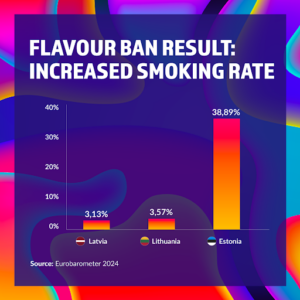
Mercato nero e comportamento dei consumatori: Secondo un Rilievo della Fondazione Tholos, 93% degli svapatori in Danimarca trovano facile accesso ad aromi vietati, con conseguente fiorente mercato nero. Inoltre, 80% degli svapatori utilizzano questi prodotti per motivi di salute. Se venisse applicato il divieto di aromi, molti svapatori potrebbero tornare a fumare. Questa può essere sicuramente definita una vittoria per la salute pubblica. In Quebec, sei mesi dopo l'entrata in vigore del divieto di aromi, 36% dei vapers iniziali hanno ripreso a fumare.
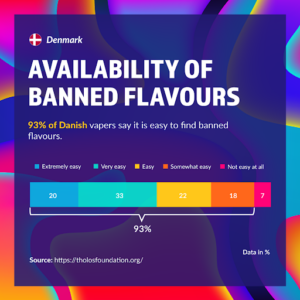
Opinione pubblica sui divieti sui gusti: L'Europa è divisa su questo tema: il 511% degli europei è a favore del divieto di aromi, mentre il 491% si oppone, secondo l'Eurobarometro. Ma coloro che ne sono maggiormente colpiti – i consumatori di nicotina – la vedono diversamente. La consultazione pubblica della Commissione europea sulla futura regolamentazione del tabacco e della nicotina ha rivelato che la maggioranza sostiene la riduzione del danno prodotti, compresi gli aromi. Solo 5% ritiene che vietare gli aromi nel tabacco e nei prodotti correlati riduca significativamente i rischi per la salute.
Utilizzo e preferenze
- Prodotti a base di tabacco riscaldato: Utilizzato da 2% di europei.
- Svapare: Il 3% degli europei svapa.
- Bustine di nicotina: Provato dal 4% degli europei.
- Fumo: Il 241% dei cittadini dell'UE fuma ancora sigarette.
- Preferenze di svapo: 77% utilizzano sistemi aperti, 40% utilizzano sistemi a pod e 41% utilizzano sigarette elettroniche usa e getta.
- Aromi utilizzati: 38% usa aromi di tabacco, 31% usa mentolo o menta e 68% usa aromi di frutta o caramelle.
- Fumo a lungo termine: Il 63% dei fumatori ha fumato per più di 20 anni, ma è più probabile che coloro che fumano da dieci anni o meno abbiano provato lo svapo o il tabacco riscaldato.
È chiaro che la più grande sfida per la salute nell'UE è ridurre il tasso di fumo, che causa 700.000 decessi ogni anno. Ciononostante, la maggior parte delle discussioni sulle normative future si concentra sulla limitazione dell'accesso e dell'accessibilità economica di alternative alla nicotina meno dannose. Se i decisori dell'UE vogliono davvero migliorare la salute pubblica, devono porre fine al panico morale sui prodotti che aiutano i fumatori a smettere e rappresentano solo una frazione del rischio di fumare. Dare priorità alla riduzione del danno e al sostegno dell'accesso ad alternative più sicure è fondamentale nella lotta contro le malattie legate al fumo.
Motivi per svapare
- Smettere o ridurre il fumo: 36%
- Salute: 28% ritiene che svapare sia meno dannoso del fumare.
- Costo: 20% usa lo svapo perché è più economico che fumare.
- Percezione di freddezza o attrattiva: 12%
- Il 92% degli europei non trova questi prodotti interessanti.
Il mito perpetuato secondo cui gli svapatori siano in qualche modo ingannati dal marketing per svapare o consumare prodotti simili deve essere smentito, soprattutto alla luce dei risultati dell'indagine della Commissione Europea. Il 92% degli europei non trova questi prodotti attraenti. La maggior parte delle persone passa allo svapo per motivi di salute o per risparmiare. Limitare aromi o prodotti e aumentare i prezzi attraverso le tasse elimina questi incentivi. Le attuali proposte perpetuerebbero inutilmente le malattie indotte dal fumo, minando l'obiettivo stesso di ridurre i tassi di fumo e migliorare la salute pubblica.
Il successo della Svezia
- Utilizzo dello snus: Il 26% delle persone usa lo snus.
- Bustine di nicotina: 20% li hanno provati.
- Risultato: Il tasso di fumatori in Svezia è tre volte inferiore alla media dell'UE.
L'approccio svedese al consumo di nicotina rappresenta un argomento convincente per la riduzione del danno. Con 261 persone che consumano snus e 201 che hanno provato le bustine di nicotina, la Svezia vanta il tasso di fumatori più basso dell'UE. In particolare, la Svezia è l'unico paese sulla buona strada per raggiungere l'obiettivo UE di ridurre il tasso di fumatori a 51 persone. Nell'ultimo decennio, il tasso di fumatori in Svezia è diminuito di 551 persone, con significativi benefici per la salute pubblica. I decessi correlati al fumo in Svezia sono inferiori di 221 persone rispetto alla media UE, l'incidenza del cancro è inferiore di 411 persone, mentre il numero totale di decessi per cancro è inferiore di 381 persone. Queste statistiche evidenziano che non è solo la presenza di nicotina, ma anche il modo in cui viene consumata, a essere importante per la salute pubblica. La storia di successo della Svezia sottolinea l'importanza di sostenere alternative più sicure alla nicotina per ridurre il tasso di fumatori e migliorare i risultati sanitari in tutta Europa.
Smettere di fumare
- Efficacia: Lo svapo è stato provato 2,5 volte più spesso per smettere di fumare rispetto alla tradizionale terapia sostitutiva della nicotina (NRT).
- Dati demografici degli utenti: Solo il 3% dei consumatori di nicotina ha iniziato con lo svapo. La maggior parte ha iniziato con le sigarette tradizionali.
- Percezione pubblica: Solo il 12% ritiene che svapare possa aiutare i fumatori a smettere. Tuttavia, il 44% degli svapatori afferma che svapare li ha aiutati a smettere o a ridurre il fumo.
Nonostante i diffusi pregiudizi, lo svapo e altri prodotti alternativi alla nicotina svolgono un ruolo cruciale nella cessazione del fumo. Sebbene solo il 31% dei consumatori di nicotina abbia iniziato a svapare – la maggior parte con le sigarette tradizionali – queste alternative sono fondamentali per chi desidera smettere. Sfortunatamente, solo il 12% dei consumatori ritiene che lo svapo possa aiutare i fumatori a smettere. Tuttavia, la realtà è che il 44% dei consumatori di nicotina afferma che lo svapo li ha aiutati a smettere o a ridurre il fumo.
Al contrario, la consultazione pubblica della Commissione Europea rivela una visione più ottimistica tra i cittadini europei. Alla domanda sul potenziale dei prodotti alternativi per aiutare i fumatori a smettere, una significativa maggioranza si è detta d'accordo, con 77% d'accordo. Solo una piccola minoranza di 9% si è detta in disaccordo o fortemente in disaccordo con questa affermazione. Queste prospettive contrastanti evidenziano la necessità di una migliore educazione e consapevolezza sui benefici dei prodotti per la riduzione del danno nella lotta alle malattie legate al fumo.
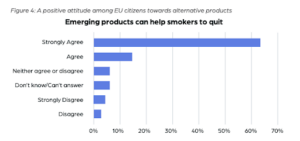
Questi risultati evidenziano l'urgente necessità che l'UE riconsideri il proprio approccio allo svapo e alla riduzione del danno. Le politiche dovrebbero concentrarsi sul sostegno ai fumatori nel passaggio ad alternative meno dannose, anziché imporre divieti restrittivi che li spingono a tornare a fumare o a rivolgersi al mercato nero. Adottare strategie di riduzione del danno, come quelle adottate in Svezia e nel Regno Unito, potrebbe accelerare significativamente i progressi verso l'obiettivo dell'UE di una lotta al fumo.
*Partecipazione al sondaggio Il sondaggio Eurobarometro ha raccolto 26.358 risposte da vari gruppi sociali e demografici, fornendo una panoramica completa dell'opinione pubblica e del comportamento nell'UE.
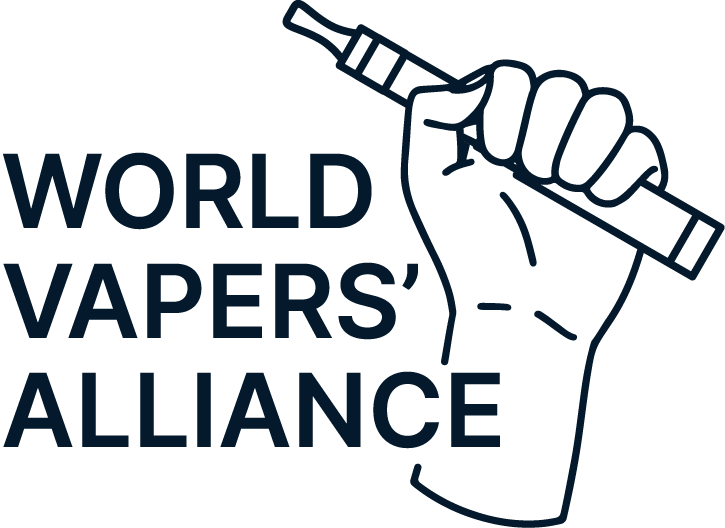






2 risposte